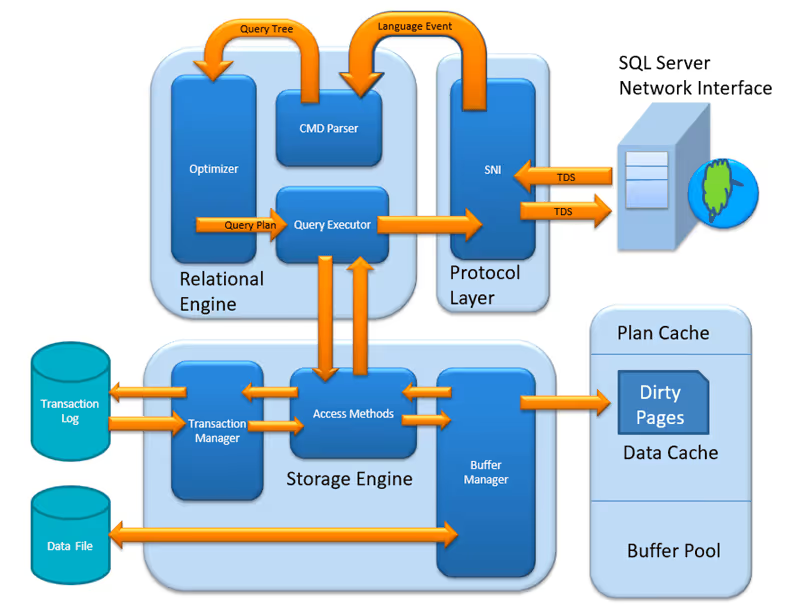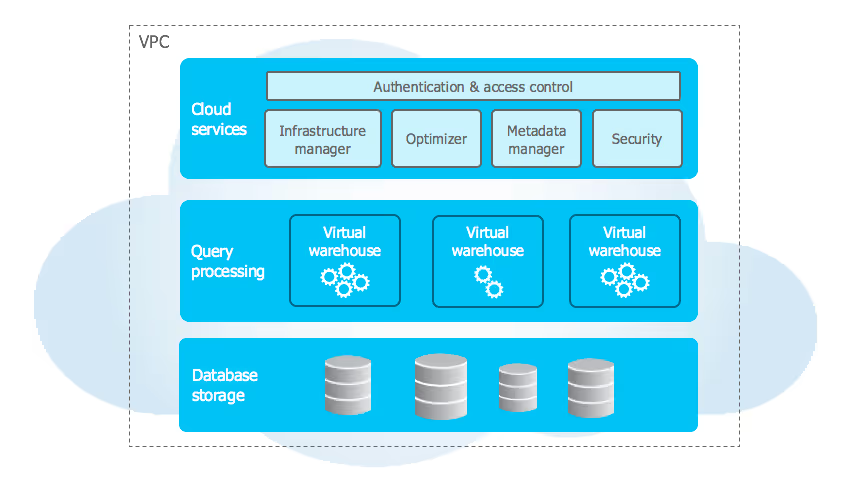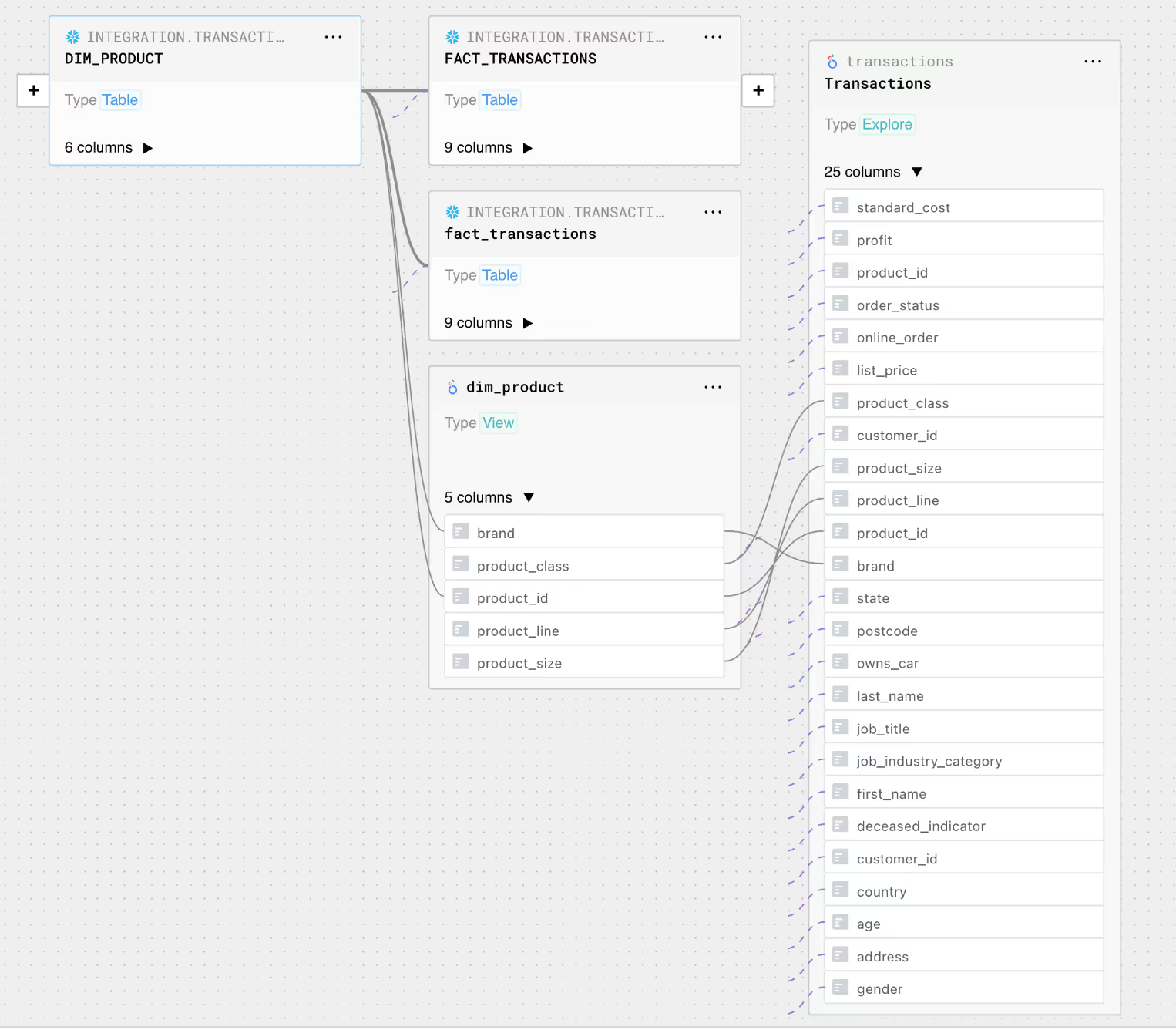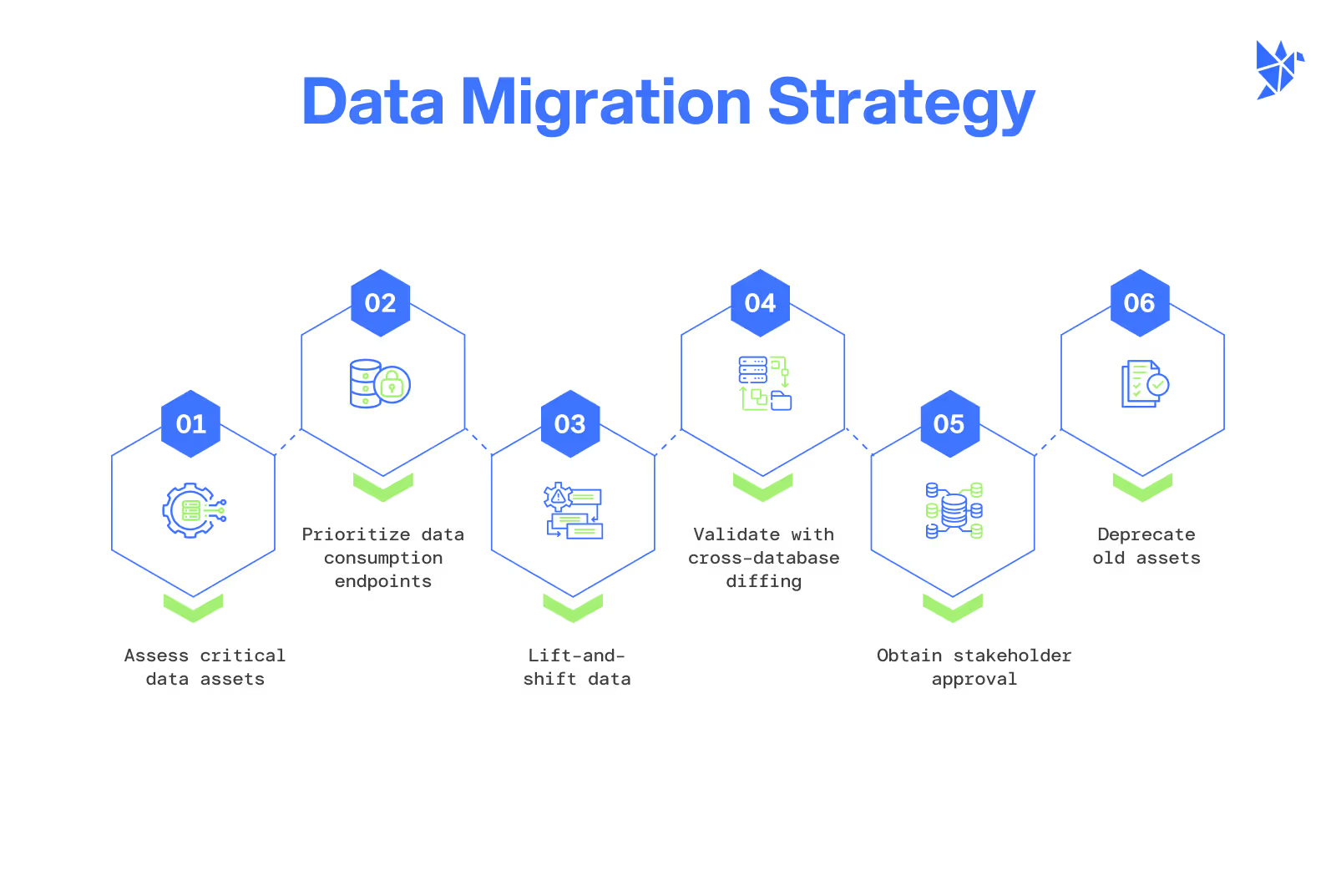SQL Server to Snowflake Migration: Challenges, Best Practices, and Practical Guide

Embarking on a migration from SQL Server to Snowflake involves navigating technical intricacies and strategic planning. From understanding the fundamental differences in database architecture and SQL dialects to efficient data transfer strategies, we explain what these differences mean for your data strategy, focusing on key areas like storage, processing, and scalability, as well as crucial business aspects like stakeholder alignment, budgeting, and minimizing downtime.
Designed for data teams, this guide offers a comprehensive roadmap for a smooth migration, from choosing the right tech and prioritizing assets to efficient data validation. Datafold’s powerful AI-driven migration approach makes it faster, more accurate, and more cost-effective than traditional methods. With automated SQL translation and data validation, Datafold minimizes the strain on data teams and eliminates lengthy timelines and high costs typical of in-house or outsourced migrations.
This lets you complete full-cycle migration with precision–and often in a matter of weeks or months, not years–so your team can focus on delivering high-quality data to the business. If you’d like to learn more about the Datafold Migration Agent, please read about it here.
Common Microsoft SQL Server to Snowflake migration challenges
Technical challenges
The transition from SQL Server to Snowflake presents data teams with a range of technical hurdles that demand careful planning and strategic approach. This section explores two major challenges: the differences in database architecture and the distinct SQL dialects of each platform.
Architecture differences
SQL Server, a traditional relational database management system (RDBMS) often hosted on-premises, uses a shared-disk architecture. This means it relies on a single instance to manage the database, leading to potential bottlenecks in performance and scalability.
In contrast, Snowflake employs a unique multi-cluster, shared-data architecture. This architecture separates storage and compute functions, allowing for independent scaling of each, resulting in highly efficient resource utilization and performance. Snowflake's design also offers near-infinite scalability and concurrency without compromising on performance.
Understanding these fundamental differences is key in planning a migration strategy, as it influences data modeling, performance tuning, and resource allocation.
SQL Server’s architecture explained
At its core, SQL Server operates with a three-layered architecture consisting of the Protocol Layer, Relational Engine, and Storage Engine.

The protocol layer serves as the front-end interface for clients to communicate with the SQL Server. It ensures secure connections and manages how data requests are sent and received.
For compute, SQL Server relies on its relational engine, which is responsible for parsing, interpreting, and executing SQL queries. It serves as the “brain” of SQL server by taking SQL queries from clients, figuring out the best way to execute them, and then actually performing the requested actions on the data.
The storage engine manages where and how data is stored on physical storage devices (like hard drives). It makes sure data is stored safely, handles multiple users accessing the same data at once, and keeps a log of changes for recovery.
In modern SQL Server deployments, you can decouple compute and storage by utilizing technologies like Azure SQL Database, SQL Server on Azure Virtual Machines, or SQL Server Big Data Clusters. These solutions allow you to independently scale your compute resources (CPU and memory) and storage capacity as needed. This separation of resources enhances flexibility, scalability, and cost-efficiency.
Snowflake’s architecture explained
Snowflake's architecture represents a significant departure from traditional database systems like SQL Server, with its innovative design focusing on separating data storage from compute resources. This architecture allows for a highly scalable and flexible data management environment.
In Snowflake, data storage is handled independently from compute processing. The data is stored on cloud-based storage services (such as Amazon S3, Azure Blob Storage, or Google Cloud Storage), allowing for virtually unlimited data storage capabilities. This data is stored in a columnar format, which is optimized for fast retrieval and efficient query performance, especially for analytical workloads. Snowflake manages the organization, file size, structure, compression, and metadata of the data storage layer, abstracting these details from the users.
On the compute side, Snowflake utilizes what it calls "virtual warehouses" to perform data processing tasks. A virtual warehouse is essentially a cluster of compute resources that can be scaled up or down independently of the storage. This means that you can increase or decrease your compute resources based on your current needs without affecting the underlying data. Each virtual warehouse operates independently, allowing multiple queries or jobs to run concurrently without contention.

Benefits of migration to Snowflake
Enhanced scalability and elasticity:
A key benefit of migrating from SQL Server to Snowflake is the substantial improvement in scalability and elasticity. Unlike SQL Server's shared-disk architecture, Snowflake's cloud architecture allows for dynamic scaling: you can adjust compute resources independently of storage, providing flexibility to handle workload variations. This means that during periods of increased demand, you can scale up resources quickly and efficiently, a stark contrast to SQL Server, where scaling often involves significant hardware investment and complex planning.
Cost-efficiency in resource utilization:
When comparing Snowflake with SQL Server, the cost-efficiency of Snowflake's pay-as-you-go model stands out. In SQL Server, organizations often have to invest in resources to manage peak loads, leading to underutilization during off-peak periods. Snowflake's model, which allows you to pay only for the storage and compute you use, presents a more economical approach, especially for businesses with fluctuating data processing needs.
Superior concurrency and multi-tenancy:
Snowflake's ability to handle these diverse workloads without performance degradation is a considerable advantage over SQL Server. SQL Server, particularly in its standard configurations, can struggle with high concurrency levels, leading to performance bottlenecks. Snowflake's architecture, with isolated compute clusters, enables efficient handling of multiple, simultaneous queries and jobs. This is especially beneficial for organizations where different teams or departments need to access and analyze data concurrently.

SQL dialect differences
There are several notable SQL dialect differences between SQL Server and Snowflake; these differences are crucial for data engineers and developers to understand when migrating between the two platforms.
Traditional translation tools often struggle with these complexities, turning what might seem like a straightforward task into a months- or even years-long process.
Datafold’s Migration Agent simplifies this challenge by automating the SQL conversion process, seamlessly adapting Teradata SQL code—including stored procedures, functions, and queries—for Snowflake. This automation preserves critical business logic while significantly reducing the need for manual intervention, helping teams avoid the lengthy, resource-intensive rewrites that are typical in traditional migrations.
SQL Server SQL
Transact-SQL (T-SQL) is SQL Server's extension of SQL, offering additional procedural programming elements. T-SQL includes variables, procedural logic, control flow, and local variable declaration, enhancing SQL's capabilities. It's particularly powerful for writing complex stored procedures and triggers, allowing for sophisticated data manipulation and transaction control within the database.
Snowflake SQL
Snowflake utilizes a dialect of SQL that closely adheres to ANSI SQL, making it familiar to most database professionals. Its SQL capabilities include robust support for JSON and semi-structured data, advanced analytical functions, and efficient data warehousing operations. Snowflake's SQL simplifies complex queries, offering high performance without the need for extensive optimizations or tuning.
Example of dialect differences between SQL Server and Snowflake: date-related operations
Let's consider a distinct example that highlights the differences in handling date-related operations in SQL Server and Snowflake, which often becomes evident when using a SQL translator.
Query in SQL Server’s T-SQL
In SQL Server, to get the name of the weekday for the current date, you might use the DATENAME function as follows:
Equivalent Query in Snowflake SQL
In Snowflake, TO_DAYNAME is used with CURRENT_DATE() instead:
These functions are not only syntactically different but also conceptually distinct, reflecting each system's unique approach to handling date and time operations. When translating from SQL Server’s T-SQL to Snowflake's SQL, these differences in date-time functions are significant and require careful consideration.
Other notable SQL syntax differences can be found in transactions handling, temporary tables, and user-defined functions. SQL Server uses T-SQL specific syntax for transactions and offers extensive support for complex stored procedures. In contrast, Snowflake's simpler, ANSI-compliant SQL lacks some T-SQL features but excels in handling JSON and semi-structured data.
Validation as a black box
Validation can become a “black box” in migration projects, where surface-level metrics like row counts may align, but hidden discrepancies in data values go undetected.
Traditional testing methods often miss deeper data inconsistencies, which can lead to critical issues surfacing only after the migration reaches production. Each failed validation triggers time-intensive manual debugging cycles, delaying project completion and straining resources.
Business challenges
Migrating from SQL Server to Snowflake presents several business challenges that organizations must navigate to ensure a smooth transition. Beyond technical aspects, this transition involves strategic planning and change management. We look at the top four concerns here.
The never-ending “last mile”
Even when a migration is near completion, the “last mile” often proves to be the most challenging phase. During stakeholder review, previously unidentified edge cases may emerge, revealing discrepancies that don’t align with business expectations. This phase often becomes a bottleneck, as each round of review and refinement requires time and resources, potentially delaying full migration and user adoption.
Cost management
The shift from a capital expenditure model (on-premises SQL Server) to an operational expenditure model (cloud-based Snowflake) requires a reevaluation of budgeting and cost management strategies. Snowflake's usage-based pricing model, while flexible, can lead to unexpected costs if not managed properly. Organizations need to develop a clear understanding of their usage patterns and align them with Snowflake's billing model to control expenses effectively.
Data governance
Migrating to a cloud-based platform like Snowflake raises concerns around data governance and security. Companies must adapt their policies to the cloud environment, addressing data privacy, compliance with regulatory standards, and ensuring secure data transfer and storage. This involves a thorough understanding of Snowflake's security features and potentially restructuring how data is managed and accessed.
Performance tuning
While Snowflake offers automatic scaling, understanding and fine-tuning the system for specific use cases is essential. This includes optimizing queries for Snowflake, managing warehouse sizes, and understanding the cost implications of various performance strategies.
4 best practices for SQL Server to Snowflake migration
Beginning the journey from SQL Server to Snowflake may seem daunting, yet with the right strategies, it can become a streamlined and manageable process. Our comprehensive guide presents best practices specifically designed for this migration. It serves as a strategic roadmap that balances both your technical requirements and business objectives.
Let's take a quick glance at the core strategies outlined in our guide to optimize your migration:

- Plan and prioritize asset migration
Successful migration planning means using column-level lineage to focus on essential data assets while pinpointing those that may be phased out in Snowflake. Start by transferring data consumption points prior to data production pipelines. This simplifies the transition process and reduces the load on the SQL Server system.

- Lift and shift the data in its current state
Leverage Datafold’s DMA for the initial lift-and-shift, automatically translating Teradata SQL to Snowflake’s syntax, which minimizes manual code remodeling and speeds up migration.
- Document your strategy and action plan
Maintaining comprehensive documentation of your migration strategy and action plan is crucial. It helps in securing stakeholder approval, identifies potential challenges for prompt resolution, and guarantees alignment among all teams involved. This fosters transparency and unified collaboration throughout the migration process. Integrate Datafold’s DMA to streamline SQL translation, validation, and documentation for a unified strategy.
- Automating migrations with Datafold’s DMA
Datafold’s Migration Agent (DMA) simplifies the complex process of migrating SQL and validating data parity across Teradata and Snowflake. It handles SQL dialect translation and includes cross-database data diffing, which expedites validation by comparing source and target data for accuracy.

By automating these elements, DMA can save organizations up to 93% of time typically spent on manual validation and rewriting.

Putting it all together: SQL Server to Snowflake migration guide
Successfully transitioning from SQL Server to Snowflake necessitates a combination of technical knowledge and efficient project management. By aligning technical and business strategies and leveraging Datafold’s DMA, your team can navigate this transition more effectively. Here’s how to put it all together:

- Plan the migration from SQL Server to Snowflake
Develop a detailed plan specific to SQL Server-Snowflake migration, outlining timelines, resource management, and stakeholder communication. Assess your current Teradata setup, data dependencies, and set clear objectives for the migration to Snowflake. Use Datafold’s Migration Agent (DMA) to prioritize critical data assets, starting with data consumption points like BI tools and dashboards to enable a smooth transition with minimal disruption.
- Prioritize data consumption endpoints first
Migrate user-facing data endpoints, like analytics queries and applications, to Snowflake ahead of data production pipelines. This step involves replicating data from SQL Server to Snowflake, allowing direct querying in Snowflake by data users and applications.
- Implementing lift-and-shift from SQL Server Snowflake
Adopt a lift-and-shift approach to ease the migration, and be mindful of any architectural and SQL dialect differences between SQL Server and Snowflake.Lift-and-shift data in its current state using a SQL translator embedded within Datafold’s DMA which automates the SQL conversion process.
- Validate with cross-database diffing
Then, use Datafold’s cross-database diffing to verify data parity, enabling quick and accurate 1-to-1 table validation between the Teradata and Snowflake databases.
- Secure stakeholder approval
After stabilizing the migration, seek approval from stakeholders. Use data diff tools to demonstrate complete parity between SQL Server and Snowflake, reassuring stakeholders of the migration's success.
- Deprecate old assets
Share the parity reports via a data diff with stakeholders to facilitate their transition to the new Snowflake system. Announce the phasing out of old SQL Server resources, and distribute comprehensive parity reports to stakeholders, supporting their move to the Snowflake environment.
Conclusion
If you're curious to learn more about how Datafold can help your data team make migrations like the one from SQL Server to Snowflake more efficient, reach out to a data migrations expert and tell us about your migration, tech stack, scale, and concerns. We’re here to help you understand if data diffing is a solution to your migration concerns.
Migrations are hard and often span years. Datafold streamlines this through automation, enabling your team to prioritize what’s important: delivering trusted, quality data to your organization.

